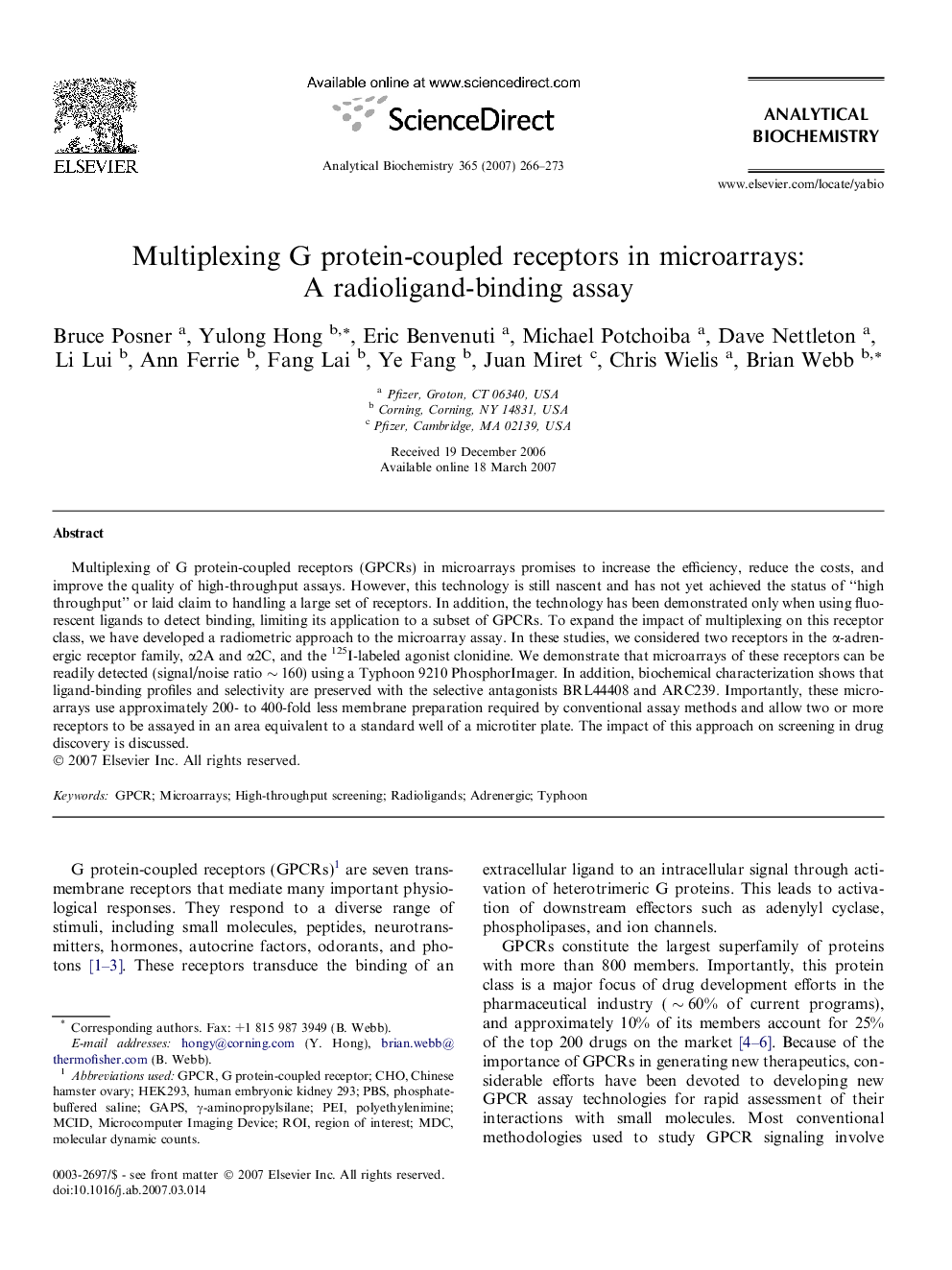| Article ID | Journal | Published Year | Pages | File Type |
|---|---|---|---|---|
| 1176582 | Analytical Biochemistry | 2007 | 8 Pages |
Abstract
Multiplexing of G protein-coupled receptors (GPCRs) in microarrays promises to increase the efficiency, reduce the costs, and improve the quality of high-throughput assays. However, this technology is still nascent and has not yet achieved the status of “high throughput” or laid claim to handling a large set of receptors. In addition, the technology has been demonstrated only when using fluorescent ligands to detect binding, limiting its application to a subset of GPCRs. To expand the impact of multiplexing on this receptor class, we have developed a radiometric approach to the microarray assay. In these studies, we considered two receptors in the α-adrenergic receptor family, α2A and α2C, and the 125I-labeled agonist clonidine. We demonstrate that microarrays of these receptors can be readily detected (signal/noise ratio â¼Â 160) using a Typhoon 9210 PhosphorImager. In addition, biochemical characterization shows that ligand-binding profiles and selectivity are preserved with the selective antagonists BRL44408 and ARC239. Importantly, these microarrays use approximately 200- to 400-fold less membrane preparation required by conventional assay methods and allow two or more receptors to be assayed in an area equivalent to a standard well of a microtiter plate. The impact of this approach on screening in drug discovery is discussed.
Related Topics
Physical Sciences and Engineering
Chemistry
Analytical Chemistry
Authors
Bruce Posner, Yulong Hong, Eric Benvenuti, Michael Potchoiba, Dave Nettleton, Li Lui, Ann Ferrie, Fang Lai, Ye Fang, Juan Miret, Chris Wielis, Brian Webb,
